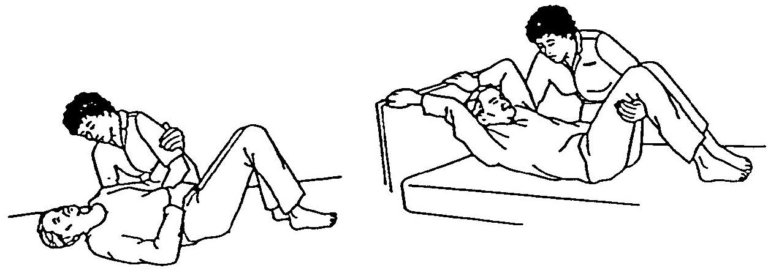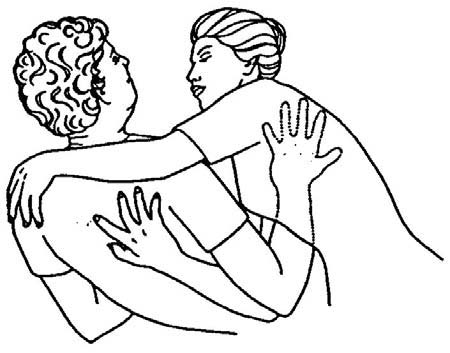Caring for a loved one with limited issues can be daunting as his or her safety is dependent on you. Safety and comfort should be the top priorities for your loved ones. Here is a simple step-by-step guide on how to transfer your loved one with limited mobility safely at home. If you are unsure of how to safely transfer your loved one at home, you should seek the guidance of a professional nurse or an occupational therapist.
Bed Mobility
- Moving up the bed

Image source: The Brookside Associates
- Ensure you are standing at the side of the bed.
- Ensure the patient’s knees are bent. You can ask your loved one to bend their knees or you can help them to do so.
- Put one arm under the patient’s shoulder blade and the other arm under his thigh
- Count to three before lifting.
- Lift the patient. Ensure that you ask the patient to push himself up as much as possible during the lift.
- Lying to sitting position

Image Source: The Brookside Associates
- You should ask the patient to bend his knees or you can help him or her to do so before you start.
- Put one hand on the patient’s knees and the other hand on the shoulder that is further away from you. Roll the patient towards you. His current position should be lying on his side.
- You can swing his leg down the side of the bed.
- You should then put one hand under the patient’s shoulders [the shoulder that is lying on the mattress] and the other hand on his upper-hip.
- Count to three before lifting. Ask the patient to push himself up as much as possible during the lift. This is to encourage the patient to be more independent and you can save some strength and effort as well.
Bed to Chair/Wheelchair

Image Source Fairview
- Ensure you have plenty of room for transfer.
- Position the wheelchair at about 90 degrees from the bed surface.
- Ensure that the wheelchair’s brakes are engaged before commencing the transfer.
- Put your arms underneath the patient’s armpits and lock your arms. The patient may hold you around your waist to feel more secure.
- Ensure that the patient’s knees should be positioned 90 degrees and feet are placed firmly on the ground.
- Count to three before proceeding to lift.
- Lift the patient up and encourage the patient to lift himself up as much as possible during the lift. This is to reduce the amount of energy needed to lift him up.
About Jaga-Me

If you are unsure of how to transfer your loved ones safely at home, you can engage with a professional nurse or occupational therapist to guide you on how to do proper transference techniques. At Jaga-Me, we believe in the empowerment of our caregivers. You can engage Jaga-Me’s professional home care services and our certified JagaPros will guide you on the proper techniques of how to move your loved ones around safely and easily at home.
Award winning Home Care trusted by health professionals – Jaga-Me




